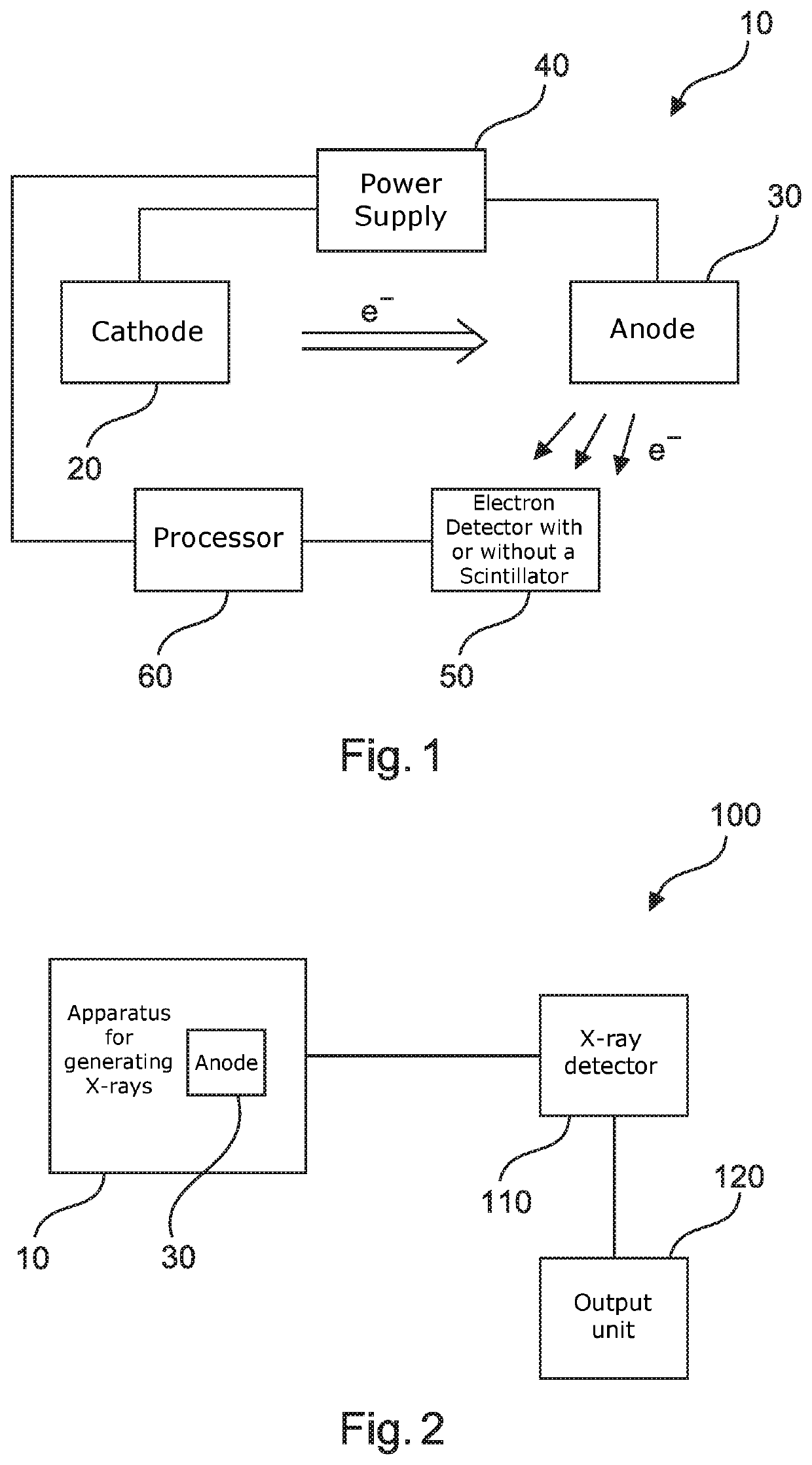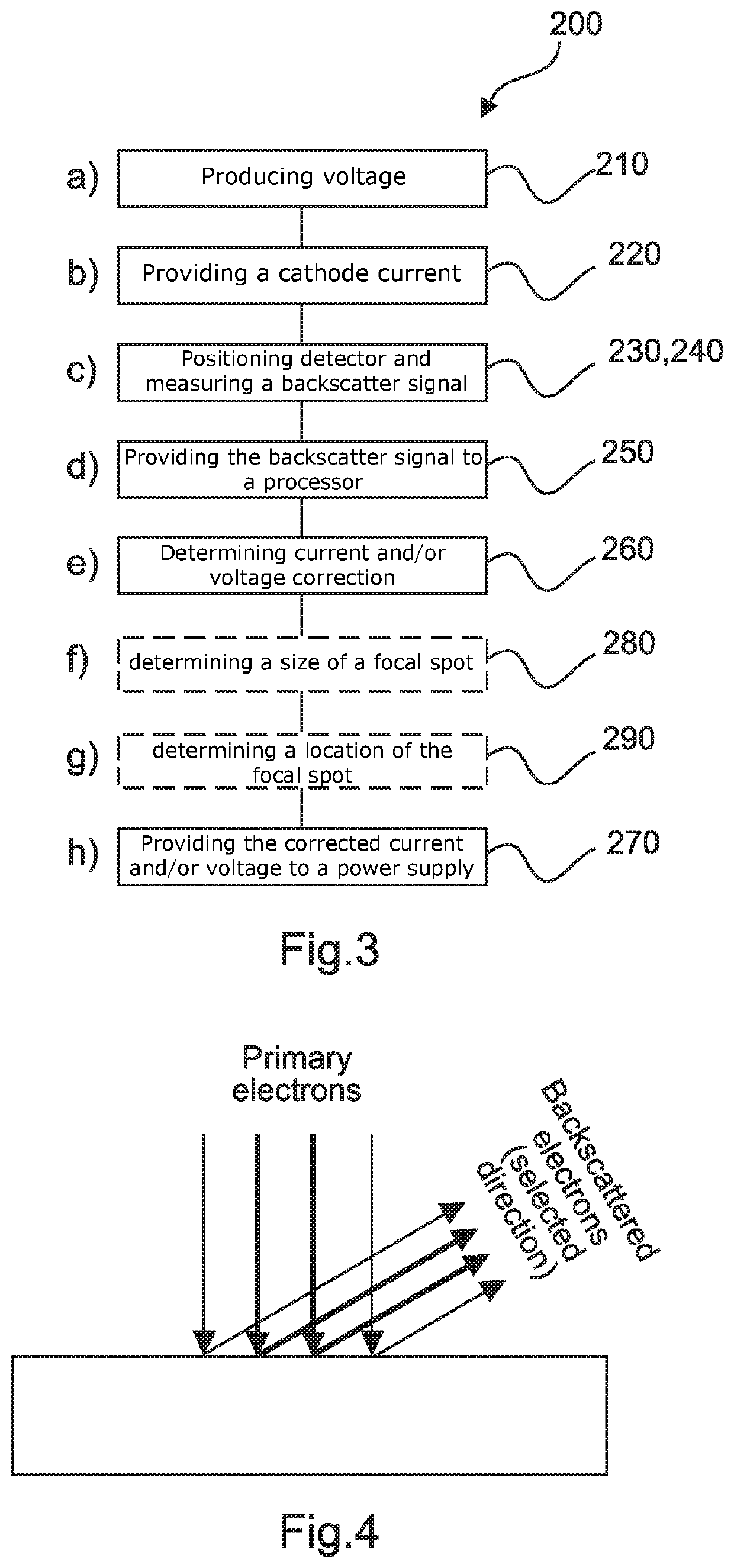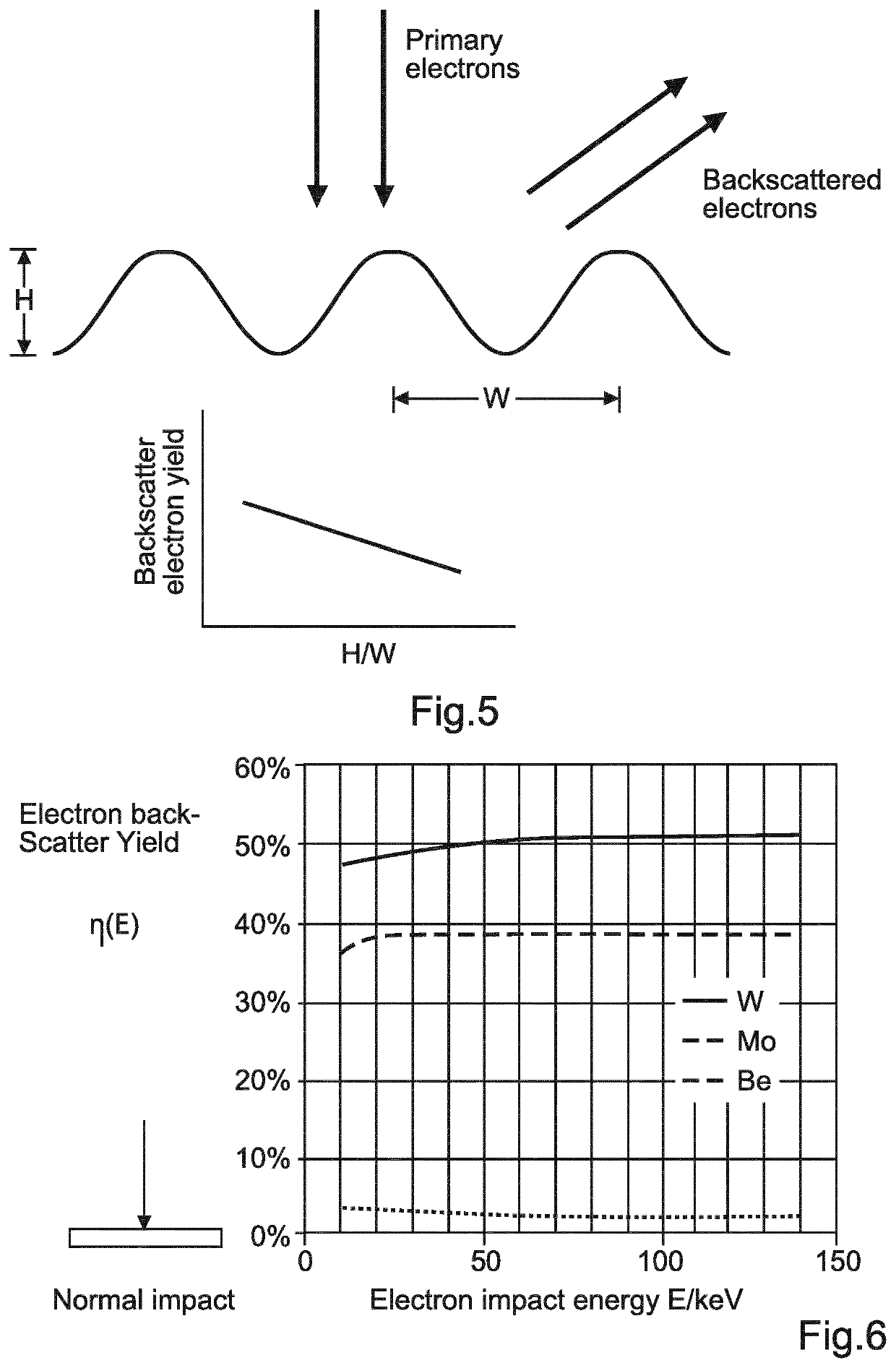Apparatus and system configured to correct a cathode current and a voltage between a cathode and an anode for generating X-rays
a cathode and current correction technology, applied in the field of apparatus for generating x-rays, can solve the problems of reducing the x-ray output of the tube, exacerbating the deterioration of the anode, and reducing the x-ray flux with tube aging
- Summary
- Abstract
- Description
- Claims
- Application Information
AI Technical Summary
Benefits of technology
Problems solved by technology
Method used
Image
Examples
Embodiment Construction
[0059]FIG. 1 shows an example of an apparatus 10 for generating X-rays. The apparatus 10 comprises a cathode 20, an anode 30, at least one power supply 40, an electron detector 50 and a processing unit 60. The at least one power supply 40 is configured to produce a voltage between the cathode 20 and the anode 30. The at least one power supply 40 is configured to provide the cathode 20 with a cathode current. The cathode 20 is positioned relative to the anode 30, and the cathode 20 and anode 30 are operable such that electrons emitted from the cathode 20 interact with the anode 30 with energies corresponding to the voltage. The electrons interact with the anode 30 at a focal spot to generate X-rays. The electron detector 50 is positioned relative to the anode 30, and is configured to measure a backscatter electron signal from the anode 30. The electron detector 50 is configured to provide the measured backscatter electron signal to the processing unit 60. This is via a wired or wirel...
PUM
 Login to View More
Login to View More Abstract
Description
Claims
Application Information
 Login to View More
Login to View More - R&D
- Intellectual Property
- Life Sciences
- Materials
- Tech Scout
- Unparalleled Data Quality
- Higher Quality Content
- 60% Fewer Hallucinations
Browse by: Latest US Patents, China's latest patents, Technical Efficacy Thesaurus, Application Domain, Technology Topic, Popular Technical Reports.
© 2025 PatSnap. All rights reserved.Legal|Privacy policy|Modern Slavery Act Transparency Statement|Sitemap|About US| Contact US: help@patsnap.com



